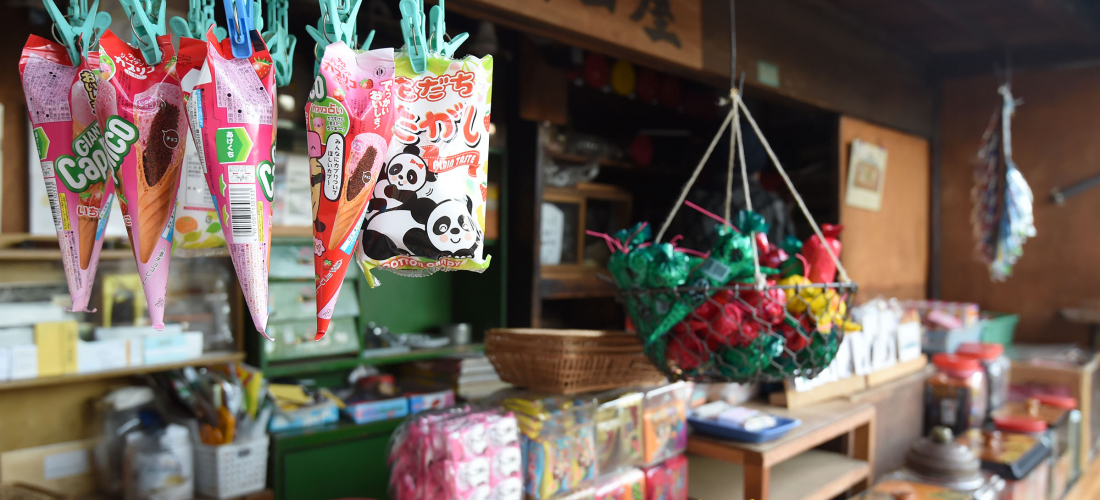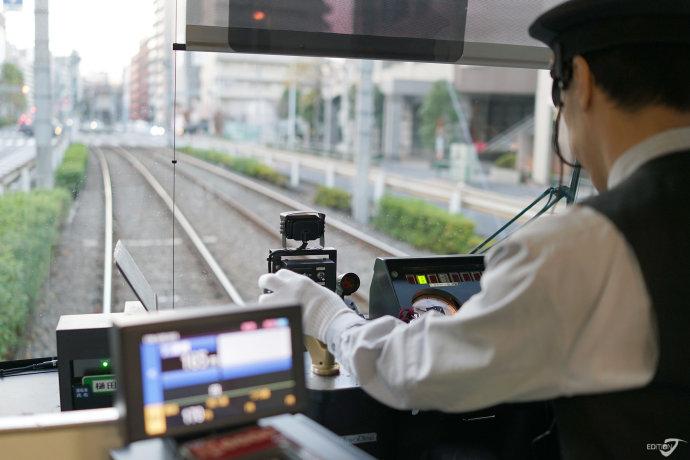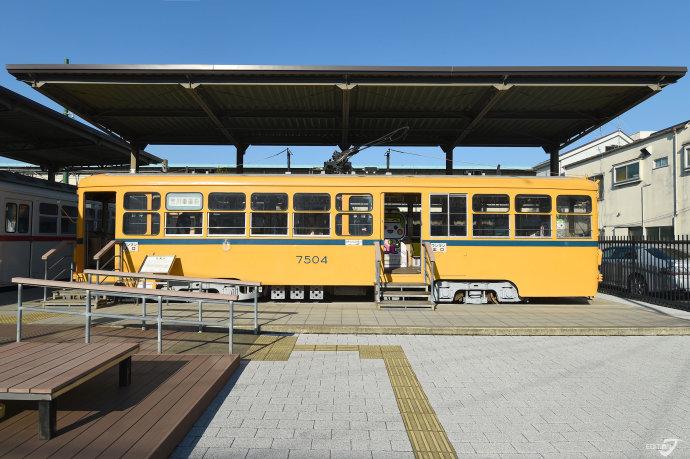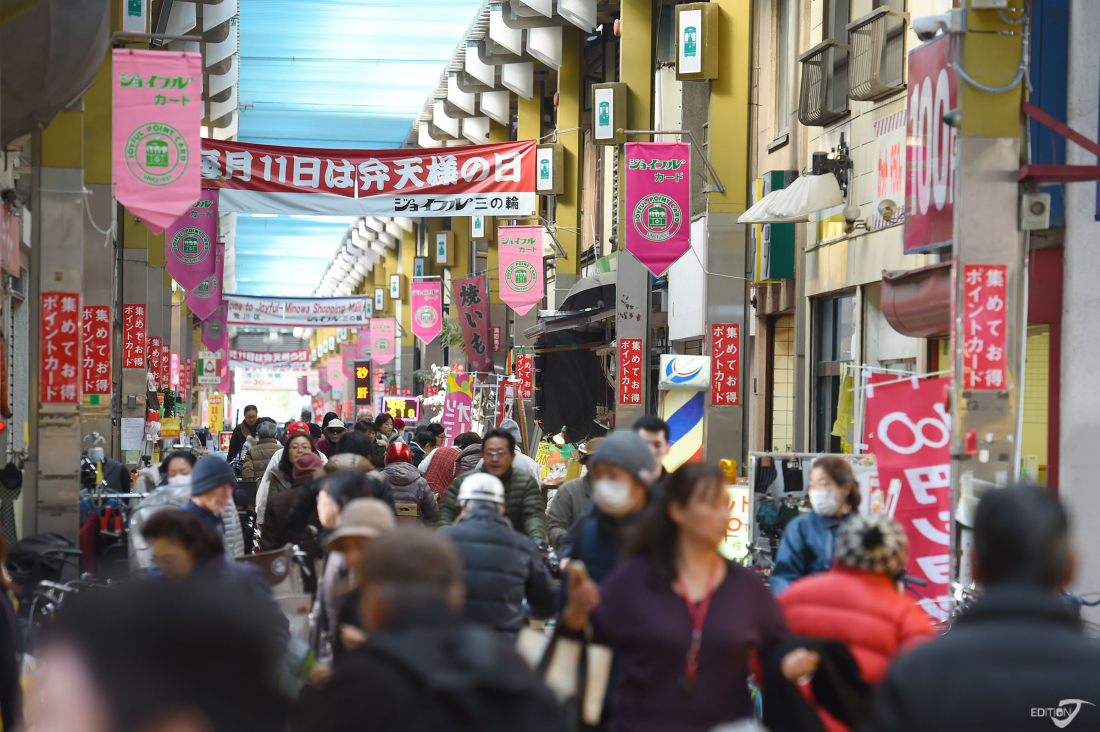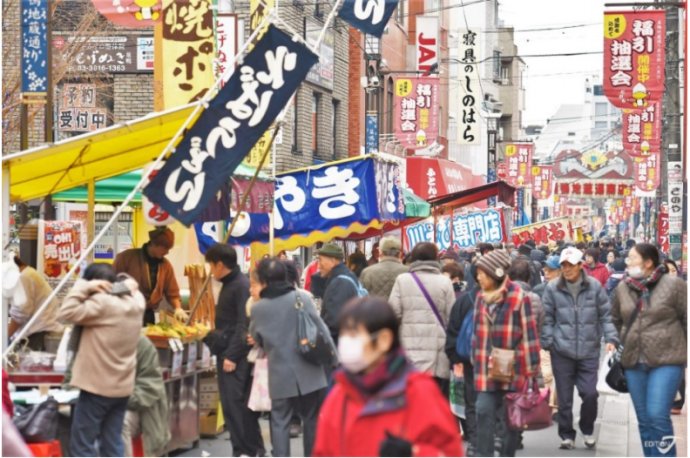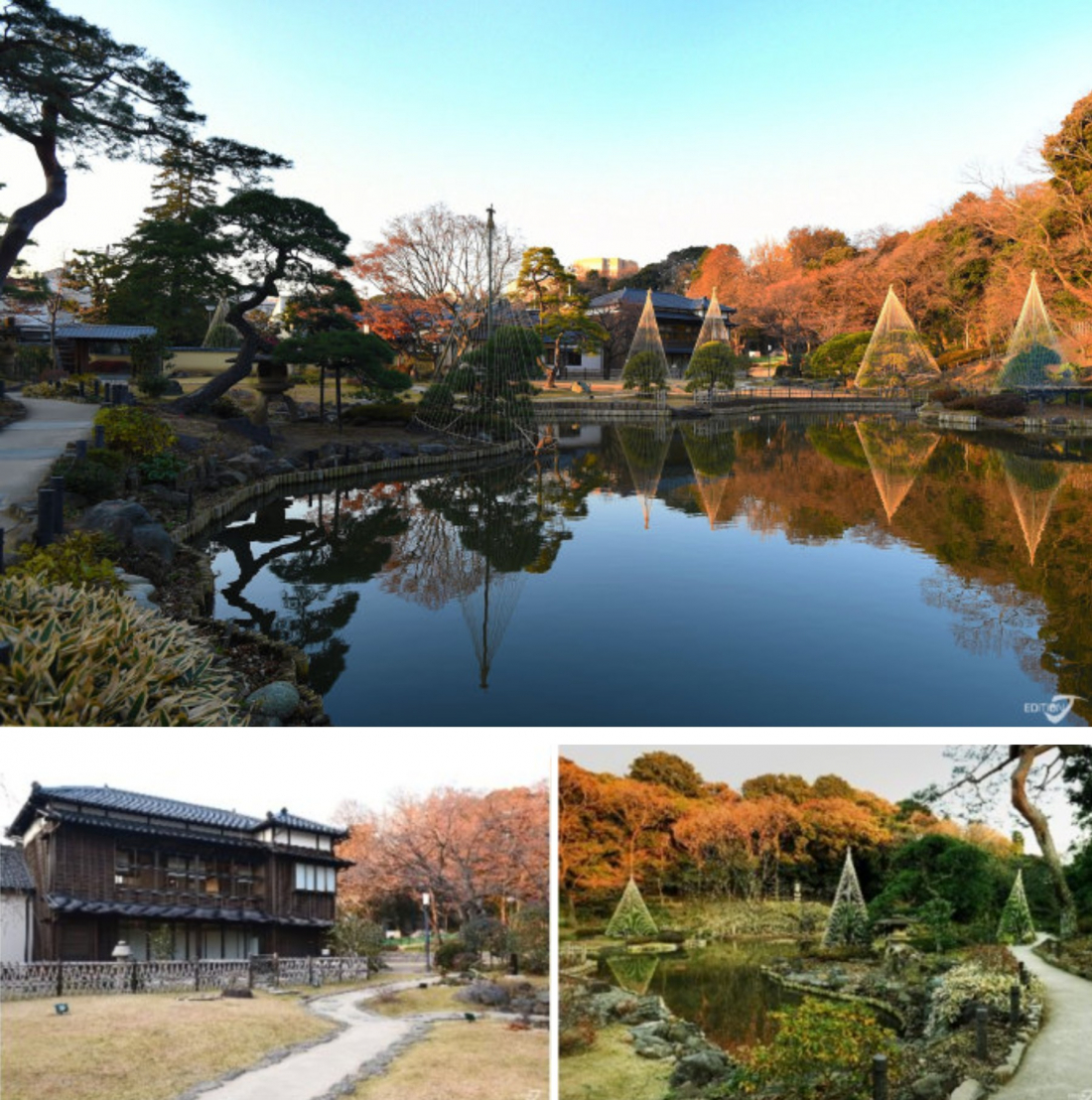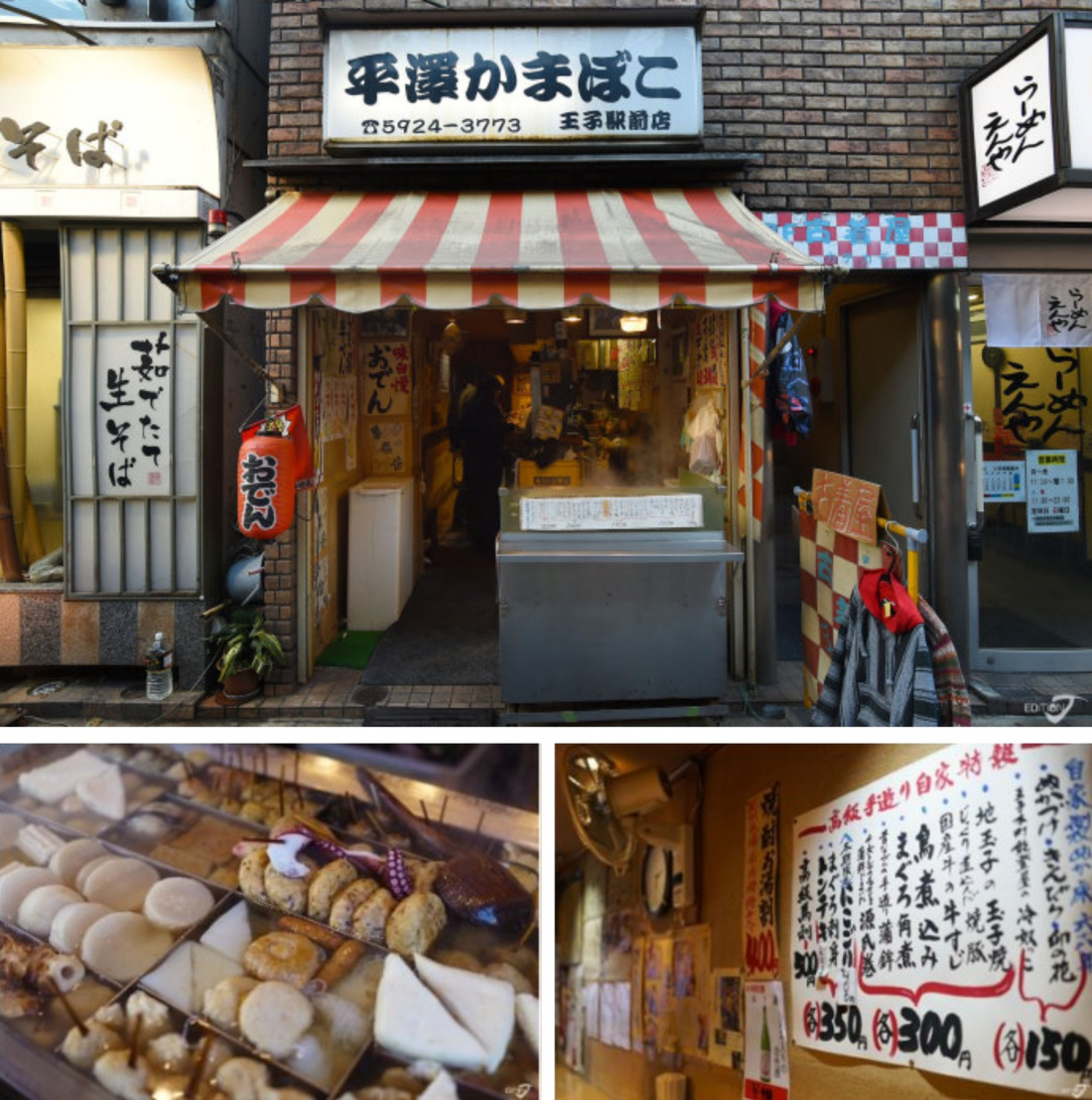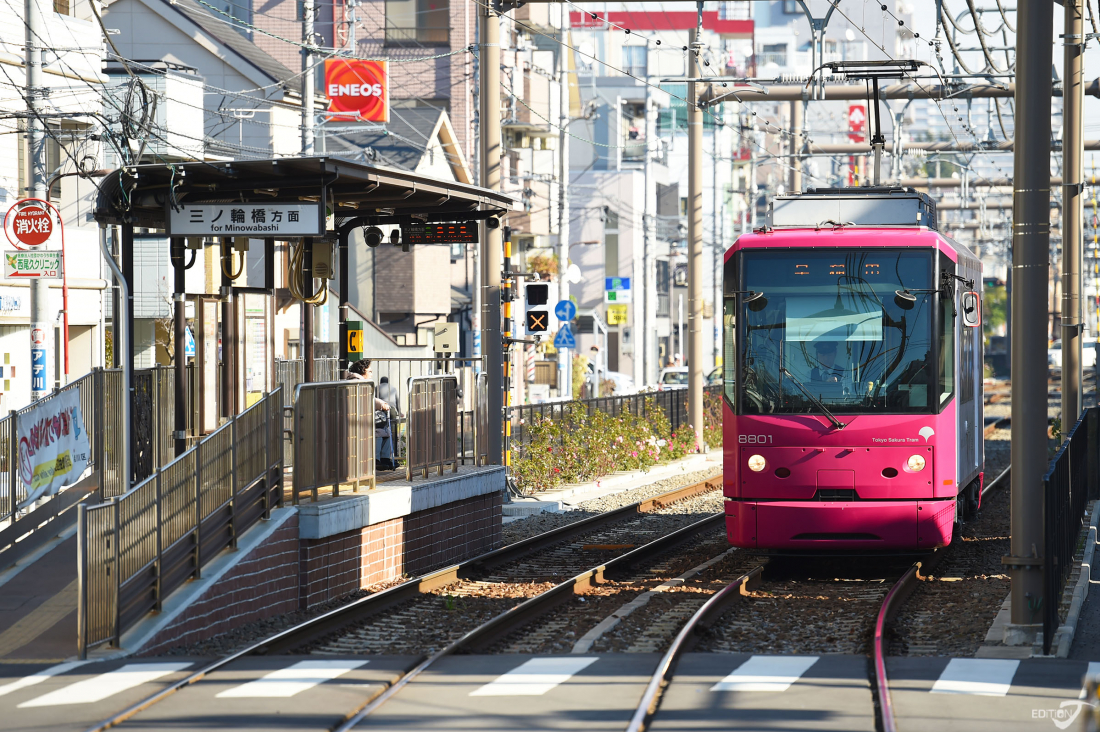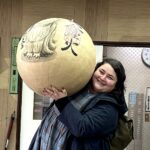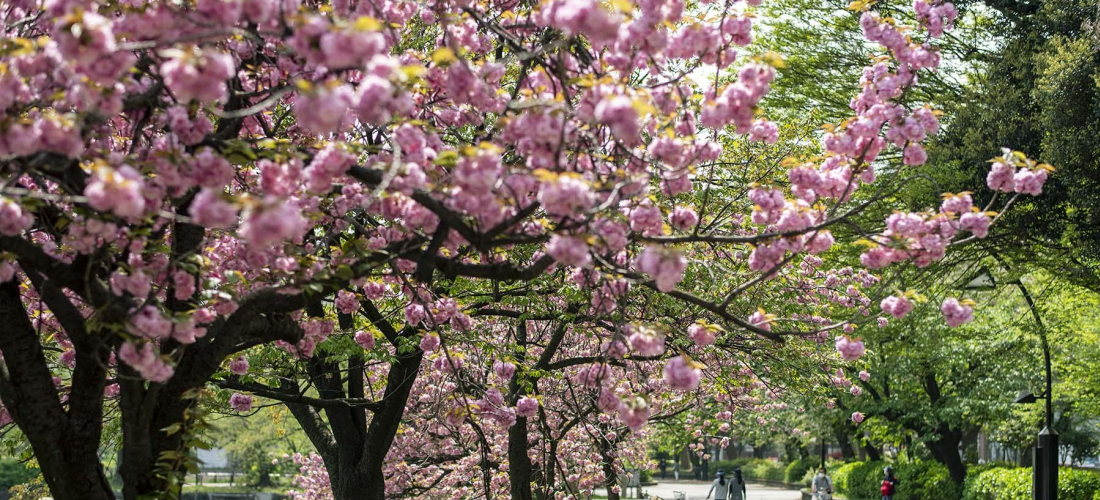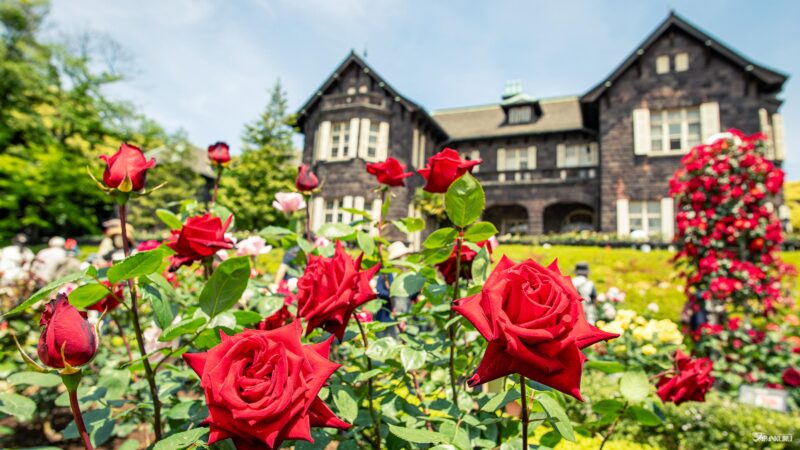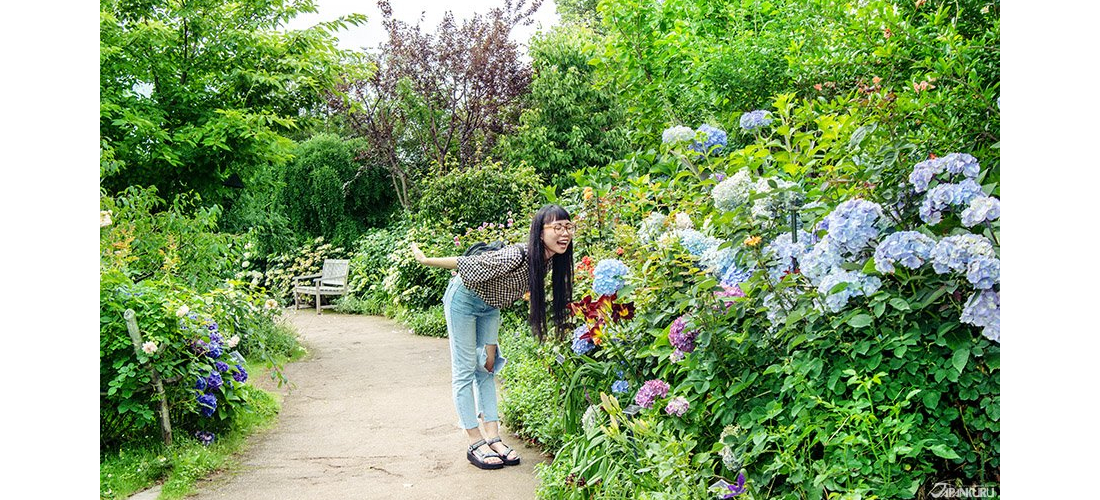See local Tokyo life in Arakawa: classic market streets, peaceful gardens, retro cafes, friendly local pubs, and more!
CONTENTS
A Day in Arakawa
For most travelers who visit Tokyo, it's a city of big flashy billboards, tall buildings, and intimidating crowds rushing in all directions, but locals know that those things don't even begin to cover the city at large. Hop on a train and head just one or two stops away from the busier areas like Shinjuku or Shibuya, and you'll find a quieter side of Tokyo, where the retro remnants of Japan's Showa period (1926-1989) are still strong, and life feels just the tiniest bit more laid back. Today we'll be taking a look at one of those areas, a whole "ward" or "city" within Tokyo called Arakawa. This area of the city is still central, and there's no doubt that it's still a part of the big, busy metropolis of Tokyo, but precisely because it's less of a tourist spot, Arakawa still has a little bit of retro charm and down to earth realness that you won't find in Tokyo's entertainment districts. Spend a day away from the crowds and follow us to visit Arakawa!
Take the Tram!
The most convenient, and perhaps most authentic, way to get around Arakawa Ward is via tram. The Tokyo tram system once reached its many tendrils throughout the whole city, with almost 100 different lines run by a handful of different operators, but these days only one line operated by Tokyo Toden is still left running: the Toden Arakawa Line, also called the "Tokyo Sakura Tram." In modern Tokyo, this lone unconnected streetcar survivor takes an interesting route, running right through the center of Arakawa Ward before swinging south to reach the very edge of the Shinjuku area, and while it might not be part of a massive network anymore, it's still the best way to explore Arakawa.
For an especially convenient deal, you can pick up a Toei One-Day Pass (都営まるごときっぷ 1 日乗車券/Toei Marugoto Kippu), which gives you free rein over the Toei Subway lines (Oedo, Asakusa, Mita, Shinjuku), Toei buses, the Nippori-Toneri Liner, and of course the Toei Tram Toden Arakawa Line, all for 700 yen (or 350 for kids). You can pick up a pass all over Tokyo, including at any Toei subway or liner station.
One last tip: If you fall in love with Tokyo's only tram while you're in Arakawa, make sure you stop by the Toden Omoide Hiroba (都電おもいで広場/Toden Memorial Square) at Arakawa-shakomae Station to see some of the old tram cars that used to traverse Tokyo, types 7500 and 5500. On weekends and holidays, the trams are even opened up so people can go inside and take a look.
Feel the Arakawa Vibes
Joyful Minowa Shopping Street (ジョイフル 三ノ輪商店街)
Travelers who visit Japan are sometimes frustrated to find that Tokyo doesn't really have the kind of open markets that are so common throughout other parts of Asia, but the obvious alternative is the ubiquitous "shotengai" (商店街) shopping street, and the Joyful Minowa shopping arcade is a prime example. Humming with a steady stream of local residents and still decorated with endearingly dated ornamentation, this classic Japanese shopping street is made for everyday errands, with affordable grocery stores and a shop selling custom-made hanko (name stamps). Look around and you'll find small izakayas where everyone sits at the counter, along with some intriguing additions like a sword shop. It's a great place to look for hidden treasures, and it's right next to the tram's terminal station, Minowabashi!
Joyful Minowa Shopping Street (ジョイフル 三ノ輪商店街)
1-18-5 Minamisenju, Arakawa City, Tokyo
Arakawa Yuen Amusement Park (あらかわ遊園)
Arakawa’s beloved local amusement park, Arakawa Yuen first opened back in the 1950s, offering thrilling rides, a petting zoo, fishing ponds, and more. In 2018, Arakawa Yuen closed for massive park-wide renovations and construction, and since its grand reopening in 2022, the little amusement park has resumed its place as a favorite Arakawa destination. The scale and the attractions available aren't quite on the same level as somewhere like the Tokyo Disney Resort, but neither are the lines, the crowds, or the prices. Get off the tram at Arakawayuenchi-mae and stop in to ride the rollercoaster and pet a capybara or two!
Arakawa Yuen Amusement Park (あらかわ遊園)
6-35-11 Nishiogu, Arakawa City, Tokyo
Hours: 9:00 – 17:00 (closed Tuesdays, except holidays)
Admission: adults 800 yen | children ~400 yen
Day Pass: adults 1,800 yen | children ~1,000 yen
Official Website (jp)
Sugamo Jizodori Shopping Street (巣鴨地蔵通り商店街)
If Tokyo's youngest and hippest trend-setters spend there time in Harajuku, where does the city's older crowd like to go? Well, one popular spot among Tokyo's elderly generations is Sugamo, earning it the funny nickname "Granny Harajuku." But just because it's popular with an older crowd doesn't mean younger travelers shouldn't bother visiting! Sugamo Jizodori Shopping Street is cheerful and lively, populated with shoppers both young and old, and lined with shops selling everyday clothing and food, along with some unique specialties. A common Sugamo souvenir is red underwear, so you'll find shops specializing in all kinds of red undergarments. Get off the tram at Koshinzuka and don't leave until you find your new lucky undies!
Sugamo Jizodori Shopping Street (巣鴨地蔵通り商店街)
4-22-8 Sugamo, Toshima City, Tokyo
Find Peace & Quiet in Central Tokyo
Kishimojindo Temple (鬼子母神堂)
As a Buddhist temple, Kishimojindo is a quiet oasis in the city, but take a closer look and you'll find that it's really not such a peaceful place after all. Believe it or not, the temple is actually devoted to a demon-goddess who goes by the names Kishimojin and Hariti, and legend tells us that when the demoness Kishimojin was converted to the Righteous Path by the Buddha himself, she became a mother-goddess and protector of children. Known to help with childbirth and parenting, Kishimojin is a popular goddess among young families to this day. But the character for demon (鬼) has never left her name in Japanese, and it seems like she might have never truly lost her fiery temper either, as this demon-goddess is also said to terrorize irresponsible parents and unruly children. Feel free to hop off the tram at Toden-Zoshigaya and visit her temple… but be on your best behavior.
Kishimojindo Temple (鬼子母神堂)
3-15-20 Zoshigaya, Toshima City, Tokyo
Hours: 9:00 – 17:00
Official Website (jp)
Higo-Hosokawa Garden (肥後細川庭園)
Now a lovely garden, this patch of land has passed through many hands in the past few centuries, giving it hundreds of years of history. For a time in the Edo period (1603-1868) it housed the shogun's retainers, and by the time of the Meiji Restoration, the land was being used as the site of a second house for the Hosokawa family, whose main home was in Higo (present day Kumamoto). In the Edo period it was common for the shogun to demand that his vassals around the country regularly come to the capital so he could keep an eye on him, which is likely why the Hosokawa family built there house here. (Perhaps you're beginning to see where the park's name comes from.)
Nowadays the park has left its feudal roots behind, and although it has been landscaped into a very elegant garden, the grounds are open entirely for free to anyone who wishes to visit. Visitors can even order a cup of matcha to sit and sip as they enjoy the view. Take the tram to Waseda and walk to Higo-Hosokawa Garden to stroll around the pond, enjoy the seasonal plantlife, and soak up the peaceful atmosphere in the middle of Tokyo.
Higo-Hosokawa Garden (肥後細川庭園)
1-1-22 Mejirodai, Bunkyo City, Tokyo
Hours: 9:00 – 16:30
Official Website (jp)
Eat Arakawa
Cool Cafe (クールカフェ)
If you find yourself wondering "but what exactly is the name of this cool cafe?", then we'd be delighted to tell you, the name of the shop is literally "Cool Cafe." But this local spot might be better described as a Japanese kissa-ten, with their menu of Japanese-style Western food (called yoshoku/洋食) and homey interior. Get off the tram at Arakawashako-mae for lunch and try the juicy hamburger steak, served with rice and a side salad. Grab a seat outside if you can, to make the most of your time in Arakawa!
Cool Cafe (クールカフェ)
8-38-1 Nishiogu, Arakawa City, Tokyo
Hours: 10:00 – 17:00
Official Website (jp)
Hirasawa Kamaboko (平澤かまぼこ)
This little shop is about as local as it gets, with a cozy counter and plenty of people stopping in for a drink and a bite to eat at lunch or after work. After being featured on Japanese TV, Hirasawa Kamaboko now has plenty of customers arriving from outside the neighborhood, but the humble establishment still sticks to a simple menu focused on oden, a homey dish of varied ingredients stewed in a clear savory broth. As the shop's name suggests, their specialty is fish cakes – an oden staple – but popular oden ingredients also include daikon radish, tofu, chicken meatballs, and much more. At the end of a busy day in Arakawa, head to Oji on the tram, and finish off the evening just like a local Tokyoite, with a cold drink and a hot dish of oden.
Hirasawa Kamaboko (平澤かまぼこ)
1-1-10 Kishimachi, Kita City, Tokyo
Hours: 11:00 – 22:30
Official Instagram
Enjoy Tokyo Like the Locals
There's nothing wrong with enjoying a day on the busy streets of Shibuya, or basking in the flashy nightlife of Shinjuku, but anyone who's lived in Tokyo for a while knows that that's not all the city has to offer, and now you know too! From temples with surprising backstories to mouth-watering retro restaurants, the Arakawa neighborhood has some surprising hidden treasures, and a day riding back on forth on the Toden-Arakawa tram is a unique experience you won't find anywhere else. Next time you're in Japan, to take a peek at another side of Tokyo, we'd recommend a little trip to Arakawa!
For more info and updates from Japan, check Japankuru for new articles, and don't forget to follow us on X (Twitter), Instagram, and Facebook!
Half a lifetime ago I came to Japan for a semester abroad... and I never left. I guess I really like the place! I spent my first few years in Japan living in the middle of nowhere, so I'd love to hear your Tokyo recommendations via Japankuru's social media accounts!
COMMENT
FEATURED MEDIA
VIEW MORE 
A New Tokyo Animal Destination: Relax & Learn About the World’s Animals in Japan
#pr #japankuru #anitouch #anitouchtokyodome #capybara #capybaracafe #animalcafe #tokyotrip #japantrip #카피바라 #애니터치 #아이와가볼만한곳 #도쿄여행 #가족여행 #東京旅遊 #東京親子景點 #日本動物互動體驗 #水豚泡澡 #東京巨蛋城 #เที่ยวญี่ปุ่น2025 #ที่เที่ยวครอบครัว #สวนสัตว์ในร่ม #TokyoDomeCity #anitouchtokyodome

Shohei Ohtani Collab Developed Products & Other Japanese Drugstore Recommendations From Kowa
#pr #japankuru
#kowa #syncronkowa #japanshopping #preworkout #postworkout #tokyoshopping #japantrip #일본쇼핑 #일본이온음료 #오타니 #오타니쇼헤이 #코와 #興和 #日本必買 #日本旅遊 #運動補充能量 #運動飲品 #ช้อปปิ้งญี่ปุ่น #เครื่องดื่มออกกำลังกาย #นักกีฬา #ผลิตภัณฑ์ญี่ปุ่น #อาหารเสริมญี่ปุ่น

도쿄 근교 당일치기 여행 추천! 작은 에도라 불리는 ‘가와고에’
세이부 ‘가와고에 패스(디지털)’ 하나면 편리하게 이동 + 가성비까지 완벽하게! 필름카메라 감성 가득한 레트로 거리 길거리 먹방부터 귀여움 끝판왕 핫플&포토 스폿까지 총집합!
Looking for day trips from Tokyo? Try Kawagoe, AKA Little Edo!
Use the SEIBU KAWAGOE PASS (Digital) for easy, affordable transportation!
Check out the historic streets of Kawagoe for some great street food and plenty of picturesque retro photo ops.
#pr #japankuru #도쿄근교여행 #가와고에 #가와고에패스 #세이부패스 #기모노체험 #가와고에여행 #도쿄여행코스 #도쿄근교당일치기 #세이부가와고에패스
#tokyotrip #kawagoe #tokyodaytrip #seibukawagoepass #kimono #japantrip

Hirakata Park, Osaka: Enjoy the Classic Japanese Theme Park Experience!
#pr #japankuru #hirakatapark #amusementpark #japantrip #osakatrip #familytrip #rollercoaster #retrôvibes #枚方公園 #大阪旅遊 #關西私房景點 #日本親子旅行 #日本遊樂園 #木造雲霄飛車 #히라카타파크 #สวนสนุกฮิราคาตะพาร์ค

🍵Love Matcha? Upgrade Your Matcha Experience With Tsujiri!
・160년 전통 일본 말차 브랜드 츠지리에서 말차 덕후들이 픽한 인기템만 골라봤어요
・抹茶控的天堂!甜點、餅乾、飲品一次滿足,連伴手禮都幫你列好清單了
・ส่องมัทฉะสุดฮิต พร้อมพาเที่ยวร้านดังในอุจิ เกียวโต
#pr #japankuru #matcha #matchalover #uji #kyoto #japantrip #ujimatcha #matchalatte #matchasweets #tsujiri #말차 #말차덕후 #츠지리 #교토여행 #말차라떼 #辻利抹茶 #抹茶控 #日本抹茶 #宇治 #宇治抹茶 #日本伴手禮 #抹茶拿鐵 #抹茶甜點 #มัทฉะ #ของฝากญี่ปุ่น #ชาเขียวญี่ปุ่น #ซึจิริ #เกียวโต

・What Is Nenaito? And How Does This Sleep Care Supplement Work?
・你的睡眠保健品——認識「睡眠茶氨酸錠」
・수면 케어 서플리먼트 ‘네나이토’란?
・ผลิตภัณฑ์เสริมอาหารดูแลการนอน “Nenaito(ネナイト)” คืออะไร?
#pr #japankuru #sleepcare #japanshopping #nenaito #sleepsupplement #asahi #睡眠茶氨酸錠 #睡眠保健 #朝日 #l茶胺酸 #日本藥妝 #日本必買 #일본쇼핑 #수면 #건강하자 #네나이토 #일본영양제 #อาหารเสริมญี่ปุ่น #ช้อปปิ้งญี่ปุ่น #ร้านขายยาญี่ปุ่น #ดูแลตัวเองก่อนนอน #อาซาฮิ

Japanese Drugstore Must-Buys! Essential Items from Hisamitsu® Pharmaceutical
#PR #japankuru #hisamitsu #salonpas #feitas #hisamitsupharmaceutical #japanshopping #tokyoshopping #traveltips #japanhaul #japantrip #japantravel

Whether you grew up with Dragon Ball or you just fell in love with Dragon Ball DAIMA, you'll like the newest JINS collab. Shop this limited-edition Dragon Ball accessory collection to find some of the best Dragon Ball merchandise in Japan!
>> Find out more at Japankuru.com! (link in bio)
#japankuru #dragonball #dragonballdaima #animecollab #japanshopping #jins #japaneseglasses #japantravel #animemerch #pr

This month, Japankuru teamed up with @official_korekoko to invite three influencers (originally from Thailand, China, and Taiwan) on a trip to Yokohama. Check out the article (in Chinese) on Japankuru.com for all of their travel tips and photography hints - and look forward to more cool collaborations coming soon!
【橫濱夜散策 x 教你怎麼拍出網美照 📸✨】
每次來日本玩,是不是都會先找旅日網紅的推薦清單?
這次,我們邀請擁有日本豐富旅遊經驗的🇹🇭泰國、🇨🇳中國、🇹🇼台灣網紅,帶你走進夜晚的橫濱!從玩樂路線到拍照技巧,教你怎麼拍出最美的夜景照。那些熟悉的景點,換個視角說不定會有新發現~快跟他們一起出發吧!
#japankuru #橫濱紅磚倉庫 #汽車道 #中華街 #yokohama #japankuru #橫濱紅磚倉庫 #汽車道 #中華街 #yokohama #yokohamaredbrickwarehouse #yokohamachinatown

If you’re a fan of Vivienne Westwood's Japanese designs, and you’re looking forward to shopping in Harajuku this summer, we’ve got important news for you. Vivienne Westwood RED LABEL Laforet Harajuku is now closed for renovations - but the grand reopening is scheduled for July!
>> Find out more at Japankuru.com! (link in bio)
#japankuru #viviennewestwood #harajuku #omotesando #viviennewestwoodredlabel #viviennewestwoodjapan #비비안웨스트우드 #오모테산도 #하라주쿠 #日本購物 #薇薇安魏斯伍德 #日本時尚 #原宿 #表參道 #japantrip #japanshopping #pr

Ready to see TeamLab in Kyoto!? At TeamLab Biovortex Kyoto, the collective is taking their acclaimed immersive art and bringing it to Japan's ancient capital. We can't wait to see it for ourselves this autumn!
>> Find out more at Japankuru.com! (link in bio)
#japankuru #teamlab #teamlabbiovortex #kyoto #kyototrip #japantravel #artnews
Photos courtesy of teamLab, Exhibition view of teamLab Biovortex Kyoto, 2025, Kyoto ® teamLab, courtesy Pace Gallery

Japanese Makeup Shopping • A Trip to Kamakura & Enoshima With Canmake’s Cool-Toned Summer Makeup
#pr #canmake #enoshima #enoden #에노시마 #캔메이크 #japanesemakeup #japanesecosmetics

⚔️The Robot Restaurant is gone, but the Samurai Restaurant is here to take its place. Check it out, and don't forget your coupon!
🍣신주쿠의 명소 로봇 레스토랑이 사무라이 레스토랑으로 부활! 절찬 쿠폰 발급중
💃18歲以上才能入場的歌舞秀,和你想的不一樣!拿好優惠券去看看~
#tokyo #shinjuku #samurairestaurant #robotrestaurant #tokyotrip #도쿄여행 #신주쿠 #사무라이레스토랑 #이색체험 #할인이벤트 #歌舞伎町 #東京景點 #武士餐廳 #日本表演 #日本文化體驗 #japankuru #japantrip #japantravel #japanlovers #japan_of_insta

Japanese appliance & electronics shopping with our KOJIMA x BicCamera coupon!
用JAPANKURU的KOJIMA x BicCamera優惠券買這些正好❤️
코지마 x 빅 카메라 쿠폰으로 일본 가전 제품 쇼핑하기
#pr #japankuru #japanshopping #kojima #biccamera #japaneseskincare #yaman #dji #osmopocket3 #skincaredevice #日本購物 #美容儀 #相機 #雅萌 #日本家電 #일본여행 #면세 #여행꿀팁 #일본쇼핑리스트 #쿠폰 #일본쇼핑 #일본브랜드 #할인 #코지마 #빅카메라 #japankurucoupon

